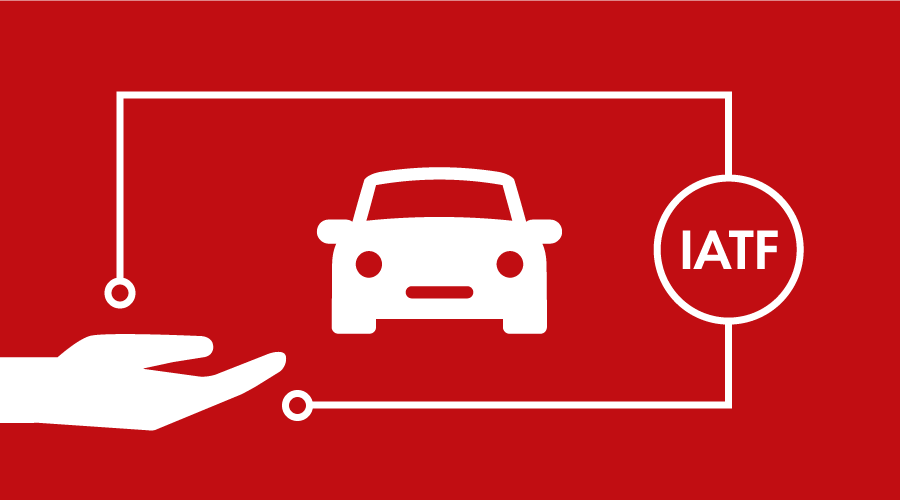
Discover How 4C Empowered Automotive Manufacturing Company to Start Supplying to Maruti, Ford, Tata, etc.
7th Jan, 2020
Client Profile
Our client has been venturing in the Plastic Moulding Industry for more than 20 years. Based in Gujarat, they have been situated in an Automotive Hub that has the latest technology to serve the automotive industry with a series of blow molding machines and injection molding machines in varying capacity to meet complex customer requirements.
Business Challenges and Our Solution
Our client had operational challenges that hindered the production, and as a result, it affected the manufacturing process and quality of the manufactured products. In order to ensure smooth management, improved production and quality, we identified loopholes that hindered the manufacturing of their products. 4C team analyzed all the requirements and challenges and accordingly provided comprehensive implementation services for IATF and MACE, which eventually helped in achieving the client’s business goals.
| No. | Business Challenge | Implemented Solution |
|---|---|---|
| General Requirements | ||
| 1 | Lack of awareness and understanding about IATF Standard requirement | Provided knowledge and information on IATF standard |
| 2 | Key Performance Indicators were not defined and monitored | Identified and defined KPI for all the processes and continued to monitor on a monthly basis |
| 3 | Absence of a Quality Manager who can address and resolve customer complaints | Recommended to hire a dedicated quality manager and helped in hiring a reliable and experienced expert |
| 4 | All the departments were handled by One Person i.e. Plant manager who managed Production, QC, Store, Dispatch, Maintenance, Customer complain, which led to inefficient process output. | Helped in allotting the responsibilities to different people and also trained the staff members to ensure efficiency. |
| 5 | Lack of management and maintenance of standard procedures as per the IATF requirements i.e. Rework, FMEA, Customer complaint handling, 4M Change Management, Education and Training, Supplier Selection, Supplier Performance Monitoring, Total Productive Maintenance, Handling of Abnormal Situations, etc. | Defined and implemented the standard procedures as per IATF requirements. |
| 6 | Risk and opportunities were not identified for the processes. | FMEA used for identification of risk related to the process. |
| 7 | Lack of Control on Documentation | All the documents were streamlined with a proper coding system. |
| Quality Control and NPD | ||
| 1 | Lack of identification of the customer-specific requirement | An efficient system was implemented to identify the customer-specific requirements. |
| 2 | APQP and PPAP were not prepared for all the parts. | Prepared all the APQP-PPAP documents with all the running parts |
| 3 | Work instruction for each inspection not available. | Prepared pictorial work instructions and displayed in the local language |
| 4 | Absence of physical verification in the in-process inspection and pre-dispatch inspection reports verification. | After discussions with the QC inspector, it was identified that the actual physical verification activities were not carried out to meet the delivery time. |
| 5 | Unidentified re-workable and non-re-workable defects | Identified and displayed the re-workable and non-re-workable item at the rework table. |
| 6 | Absence of an authorized person for rework. | Identified and appointed an authorized person as per their skill matrix. |
| 7 | Improper system for managing the product on different levels i.e. Okay, Not-Okay and Hold Product. Okay and Not Okay Areas were not distinguished at the incoming stage. | Red bin area identified at the incoming stage for storage of NC material and also identified area for the ‘Okay’ materials. |
| 8 | Absence of product and process audit system | Implemented process and product audit format and helped in following through. |
| 9 | Defect samples were not displayed at inspection tables | Defect samples displayed at all inspection tables |
| 10 | MSA and SPC systems were not implemented | Training and formats for the appropriate systems were provided |
| 11 | COPQ not being monitored | Implemented strategic COPQ |
| Production | ||
| 1 | Undefined standard process parameter | Defined standard process parameters |
| 2 | Absence of 4M change and abnormal handling system not in the production process | 4M system defined and implemented in the production process |
| 3 | Material handling system required to be defined at all levels. All the raw materials, finished goods, and WIP materials were not properly identified and stored. Proper segregation of the OK, Not OK (Hold, NC) materials was not available | At the production stage, different color trolley provided for OK Product (Green), Not Okay Product (Red), Hold Product (Yellow) and effectively followed |
| 4 | Red bin / red area – for Hold and NC materials – analysis system was not defined and implemented | Particular area identified, and analysis being carried out |
| 5 | Appropriate controls not implement for similar appearance materials to avoid any risk for wrong use or mixing. | Work instructions were defined to differentiate similar appearance materials |
| 6 | 4M Change, Rework and abnormal production inspection table not separately identified. | 4M rework and abnormal production systems separately identified and were implemented and followed effectively. |
| Maintenance | ||
| 1 | System procedure was not defined for total productive maintenance | Defined system procedure and provided productive maintenance process |
| 2 | Critical spare lists were not defined and stored separately. | Identified and stored critical spares lists separately with monthly review frequency. |
| 3 | Preventive maintenance checklist was not defined as per the machine manual. | Prepared PM check sheet according to the manual and the process is continued to achieve 100% actual preventive maintenance irrespective of the high production load |
| 4 | For Consumable items frequency for changing/re-sharpening were not defined | Consumable items identified and frequency has been defined. |
| 5 | Breakdown maintenance records not properly maintained | After the format implementation, the breakdown maintenance reports are recorded properly |
| 6 | Predictive and overhaul maintenance system not implemented | Formats implemented and followed. |
| 7 | MTBF and MTTR target were not defined and monitored | Target defined and monitored effectively till the last visit |
| 8 | Test frequency for error-proofing system was not defined and linked with the control plan. | List of error proofing items are identified and frequency has been defined and inspected as per the defined frequency. |
| Purchase | ||
| 1 | Supplier evaluation was not carried out | Now, monthly evaluation of suppliers is being carried out and scorecard prepared for individual suppliers. |
| 2 | Premium freight cases were not registered | Format implemented, however, no case found evident |
| Store and Dispatch | ||
| 1 | FIFO system work instructions were not defined and followed | Work instructions prepared for FIFO system however, it is challenging to follow through due to the lack of storage box facility |
| 2 | FG material stored more than capacity FG storage box | Suggested to purchase more FG storage boxes |
| HR | ||
| 1 | No authorised person for HR, and No training given to the staff, which is highly required as most of the staff is new. | Defined HR Procedures including Education and training Prepared and implemented all the HR formats Defined level-wise skill criteria and trained record |
IATF 16949:2016 Implementation
Complete IATF implementation included –
- QMS requirements fulfillment
- Implementation and training of core tools including APQP, PPAP, FMEA, MSA/SPC and Control Plan
- Quality Management System Documentation, Records Retention, and Engineering Specification
- Standardized Work Verification of job set-up (First Piece to Last Piece inspection)
- Control of nonconforming outputs
- System established for process and product audit
MACE Implementation
MACE implementation included –
- Implementation of 4M (Man, Machine, Material, Method) Change management system
- Procedure for education and training defined.
- Level wise skill criteria defined (Staff / Operator)
- Display of skill matrix at every operation stage
- Monitoring of Operator skill
- Implementation of Poison test system for every visual inspection
- Preparation of Quality management system manual, procedure, work instruction
- Implementation of Initial production control system
- Preparation of control standard, inspection specification, operational inspection and parameter chart
- Implementation of total productive maintenance system
- Visual defect sample display, Operator skill monitoring system
- Procedure defined for Maintenance of Bins and trolley
- Procedure defined for handling of customer complaints.
- Procedure defined for supplier control and handling of non-confirming output
- Handling abnormality in quality (Requirement of identifying abnormal situation, Handling of incoming, in-process and final stage nonconformity handling)
Business Benefits
Due to consistent efforts in improving the quality of the products and ensuring timely delivery led to win “Best Supplier Award” from YanFeng Automotive Interiors & TATA Autocomp.
- Reduction in customer Rejection by 10%
- First time right products – 99%
- Process implementation effectiveness score achievement 100%
- Order received of MG Motor India after IATF implementation
- Improvement in staff awareness about IATF standard requirement
- Implementation of 4M change management
- Responsibility oriented work
- Streamline of documentation
4C has 15+ years of experience in JS/IATF consulting and training of IRCA Certified IATF auditors. Having managed 100+ TS/IATF Consulting Projects and 10,000+ hours of IATF 16949 Training on Core Tools, 4C has gained exceptional expertise to successfully implement IATF and empower clients to achieve desired business goals. To know more about IATF implementation, contact our experts now.
